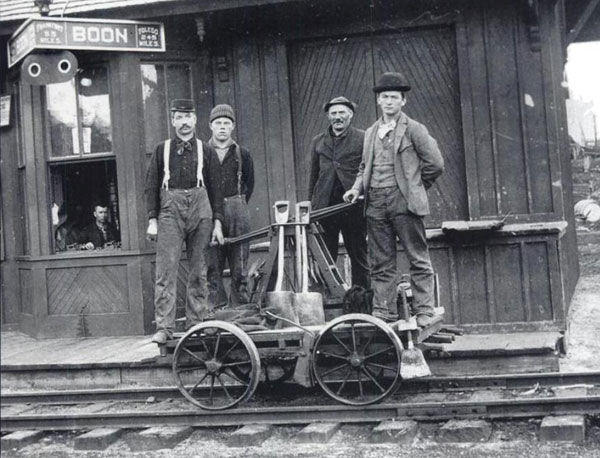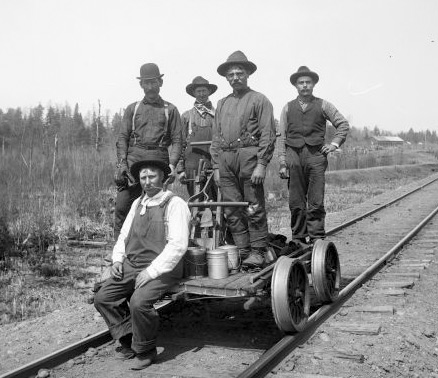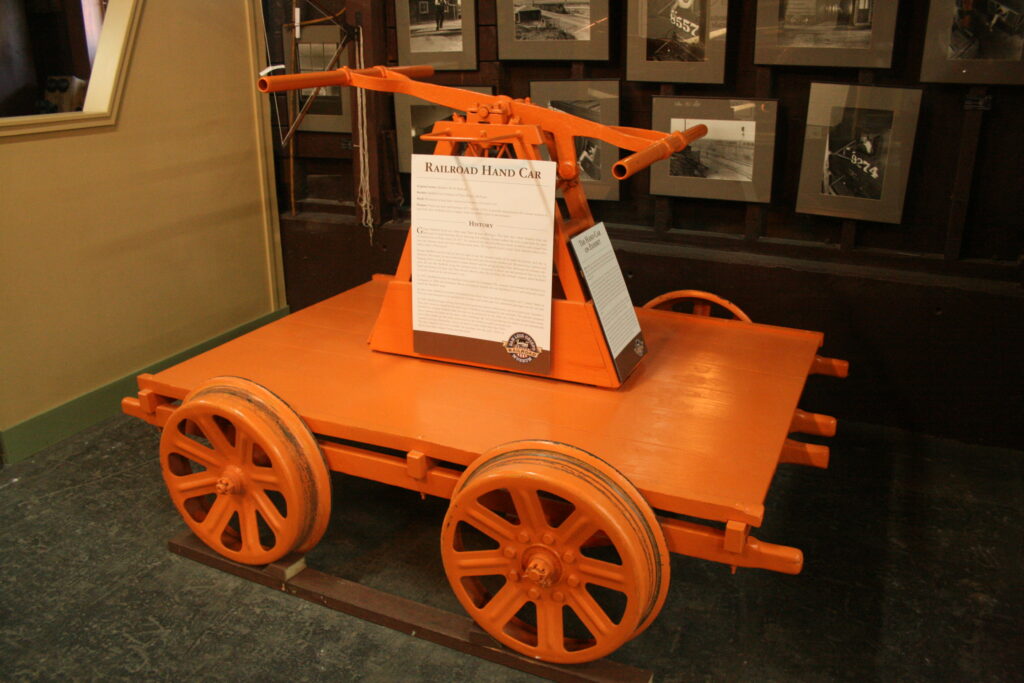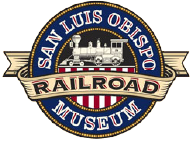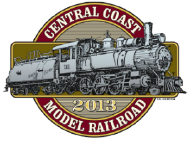Southern Pacific Handcar
PURPOSE
Hand operated track gang cars were primarily used for track and signal maintenance from the 1860’s to the 1950’s by crews, called section-hands or gandy-dancers, who would load their tools and lunches onto the deck and pump to an area of the railroad needing work.
ORIGINAL OWNER
Southern Pacific Railroad
BUILDER
Sheffield Car Company of Three Rivers, Michigan
BUILT
Based on research of the fabricated and cast metal components, the handcar on exhibit at SLORRM is estimated to have been constructed between 1910 and 1930
MUSEUM’S SOUTHERN PACIFIC HAND CAR EXHIBIT This Sheffield Car Company hand car was purchased by the Southern Pacific Railroad for use in Southern California. Southern Pacific Railroad began using a “Safety Orange” paint of their specific tint in the late 1930’s. During a complete restoration of the car in 2010 by Brad LaRose, it was discovered the original Sheffield Factory paint on the car was a bright Canary Yellow. Traces of the Safety Orange were also found on all parts of the car except the gears and crank. Therefore, it appears as if the Southern Pacific Railroad owned the car through the 1930’s. Southern Pacific Railroad rebuilt the car as needed when parts wore out or were damaged. The lever tower sideboards are not original, and three of the wheels are not original and were put on by the railroad.
This hand car was found at the Southern Pacific Railroad, Arcadia, Ca, depot in 1952 and acquired by a private individual. The station was moved to Griffith Park’s “Travel Town” museum in the city of Los Angeles, Ca, that year.
Brad LaRose purchased the hand car in 2009. The 2010 restoration on the car was done to match the Southern Pacific Railroad “Rebuilt” appearance, thus Safety Orange paint was used. Restoration involved saving all of the original as built and railroad replaced remaining wood (56% of the car), and replacing the inappropriate wood parts that had been added by the private owner. The deck and frame wood is white oak, the lever support tower assembly is beech wood. All of the metal parts, except for needed missing bolts and nuts, are original.
HAND CAR HISTORY
Handcars came onto the railroad scene in the 1860’s built by individual railroads in their shops. Early models used a hand crank that was spun to propel the car but these cars were dangerous.
Beginning in the 1880’s, commercial versions were built by the Sheffield, Buda, and Kalamazoo companies. The cars weighed 500-600 pounds and could be handled by two to four men.
In the early 1900’s, use of handcars declined as railroads replaced them with motorized versions known as motorcars. While handcars were inexpensive and reliable, the problem was the physical exertion required to operate them over a 2 to 5 mile section. As motor cars replaced the handcars, section gangs worked longer and harder. Although most handcars were retired by 1910, they still served in yards and terminals where travel distances were shorter and their simplicity worked well. In the 1970’s a few handcars were still in service, but they completely disappeared from the railroad scene by 1980.
MORE INFORMATION
https://en.wikipedia.org/wiki/Handcar
https://www.handcar.com/what-is-a-handcar/
https://whippanyrailwaymuseum.net/equipment/handcars/
http://www.railroadhandcar.com/history/history.php
http://www.railroadhandcar.com/history/handcar-photos.php
https://www.californiarailroad.museum/assets/carousels/IHP-Teachers-Aid.pdf
